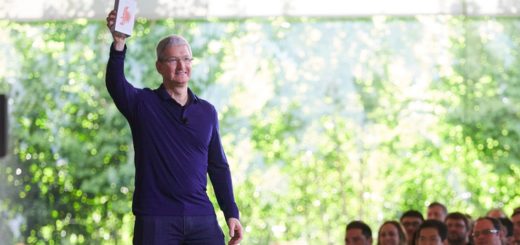How Apple Watch monitors your heart rate
This is how Apple’s watch monitors your heart rate, according to Apple:
“To calculate heart rate and rhythm, Apple Watch’s sensor uses green LED lights flashing hundreds of times per second and light-sensitive photodiodes to detect the amount of blood flowing through the wrist. The sensor’s unique optical design gathers signals from four distinct points on the wrist, and when combined with powerful software algorithms, Apple Watch isolates heart rhythms from other noise.”
Remote healthcare takes a bow
Apple confirmed this is how the Watch monitors heart beat in a press release announcing the launch of the Apple Heart Study app, available in the U.S. (Apple has much more extensive information on how this works here).
The app is the front end of a first-of-its-kind research study Apple is engaged in with Stanford Medicine into the leading cause of stroke, which causes approximately 130,000 deaths and 750,000 hospitalizations in the US each year.
The new study begins at the same time as a new FDA-approved Apple Watch gadget called KardiaBand hits the market. The $199 band (with a $99/yr subscription) carries an embedded heart rate sensor and – in a sign I think of what’s to come – also has a remote monitoring service that analyses your data and intervenes if a problem is revealed.
What’s interesting is that Apple’s Heart Study also promises to alert users if irregular heart patterns are identified.
Information is power
“Working alongside the medical community, not only can we inform people of certain health conditions, we also hope to advance discoveries in heart science,” said Jeff Williams, Apple’s chief operating officer.
This is the beginning of something.
Both solutions serve as excellent illustrations of just how some elements of future digital health will be provided.
This is how it will be:
- Remote health monitoring systems will track vital signs. Diabetes, fitness and activity, heartbeat, more. T
- hey will link up with increasingly extensive AI databases capable of identifying abnormal patterns that are relevant to people of your distinct height, age, gender…
- As the information gathered by these machines grows, the more capable they will become of delivering health services personalized to your particular situation.
I discussed this a little in 2015, when Apple reached a data deal with IBM.
Apple’s quiet evolution
We know Apple is looking in this direction because it has also been exploring opportunities around electronic health records. I’ve discussed this before, but I will say that once your records can be parsed by trusted providers and fed through information analysis systems that combine personal privacy with mass market insight, you begin to see an opportunity to figure out more complex health conditions on the basis of multiple data points.
In more real terms, AI would spot a time when both your heart rate and body temperatures are up, your sleep patterns have declined and your activity has decreased. You may have been aware of some or none of these symptoms, but AI would be able to match your symptoms up with data gathered from millions of other people in order to identify a problem before you even knew you were getting sick.
That’s what I find myself thinking when I look to the Apple Heart Study.
This isn’t just Apple figuring out how to do something good for the world, this is also Apple taking important steps to building out an ecosystem designed to promote, protect and encourage personal health.
Why else did it show us this video?
‘A new view’
“Health is a huge issue around the world and we think it’s ripe for simplicity and a new view,” Apple CEO, Tim Cook told a May 2016 conference in Amsterdam. We recently heard the company has even thought about buying a health clinic within this plan.
You will wear sensor-laden devices, pay a monitoring fee to a service provider, and receive personalised health interventions to help you stay well.
The beauty of these solutions (once you remove the profit motive from the plan, unlikely as that sounds), is that there is the potential to deliver much higher quality health care to every person on the planet with solutions like these.
I do hope we’re all brave enough to take that chance.






